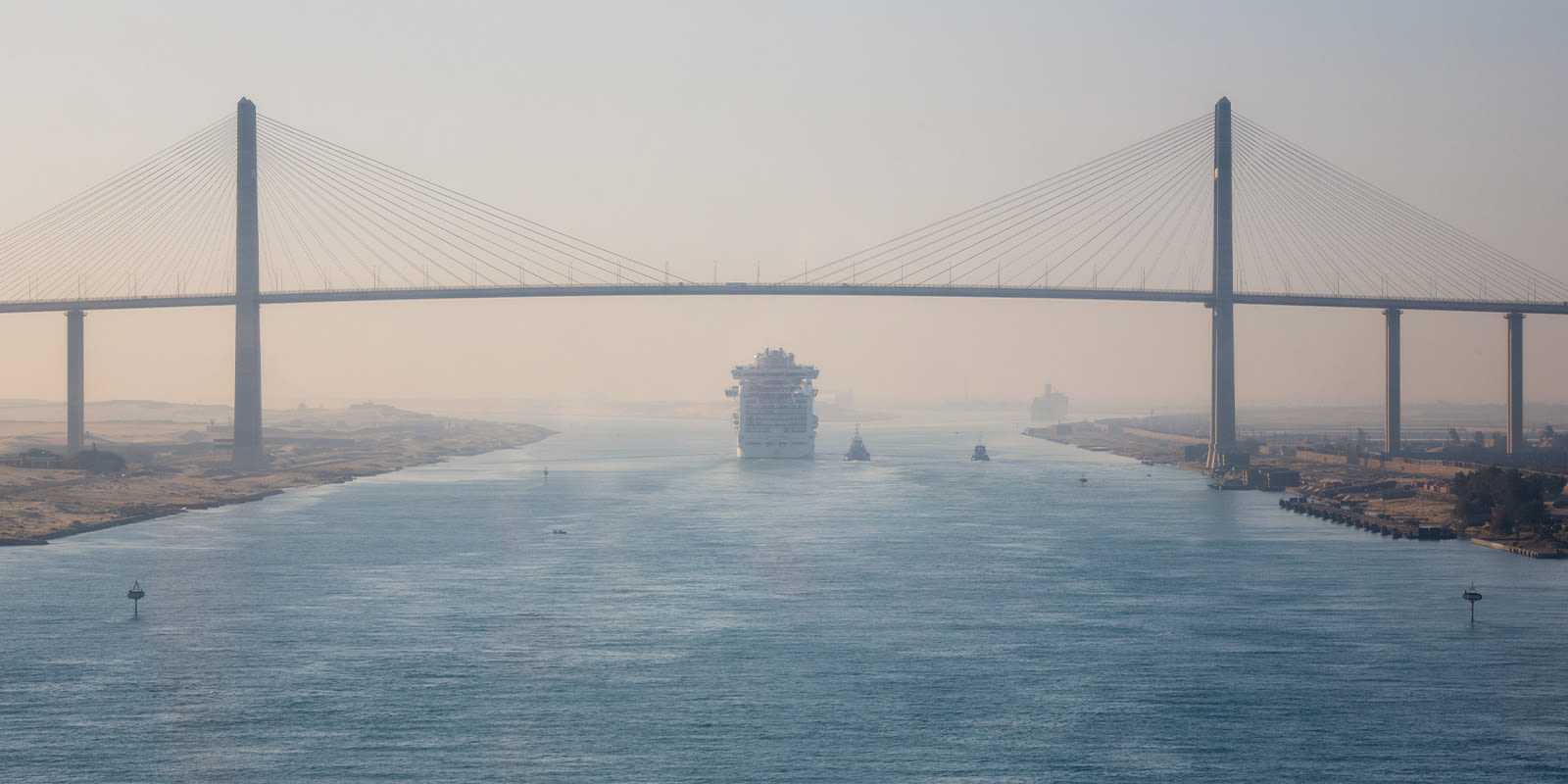
March 26, 2021
Too Big to Sail? Ever Given’s Suez Canal Crash Is a Sign of the Times
Tags:
Too Big to Sail? Ever Given’s Suez Canal Crash Is a Sign of the Times

March 26, 2021
Last Tuesday morning, the 20,000-TEU Ever Given ran aground while passing through the Suez Canal on its way to Rotterdam.
For now—and possibly weeks to come—the ship is stuck. In the immediate aftermath, up to 10% or more of the world’s global trade backed up on either side of the canal. Those ships are now diverted. The Cape of Good Hope is their likely detour.
Ever Given entered the canal at 8 knots, the Suez’ speed limit. By the first turn, she was at 13.6 knots. A dust storm, blown by fierce winds, limited visibility and knocked the ship askew.
“Speed and wind probably played a factor,” explains Nathan Strang, Flexport Senior Trade Lane Manager. “These ships are not nimble. They’re designed to go in one direction for a very long time, not navigate tight canals. Tugs go with the ships to help, but tugs aren’t designed for ships the size of Ever Given.”
Size Matters
Ever Given was built in 2018. At a quarter-mile long and a total 20,124-TEU capacity, she was one of the largest ships in the world at her launch. Now, she’s down to one of seven in 13th place for highest capacity.
That’s because container ships keep getting larger. For starters, operating one 20,000-TEU ship is cheaper than operating two 10,000-TEU ships. It’s greener, too: Emissions per container are less on a larger ship.
The big-ship trend shows no sign of downsizing. With demand for ocean capacity at an all-time high, more than 400 container ships—totaling 3.63 million TEUs—have been ordered new since late 2020.
In 1869, when the Suez Canal opened, the first ship to sail the entire canal, the HMS Newport, was 145 feet long. She was a good ship in her day, sent a few decades later, under a new name, to explore the Arctic for Northern Sea routes—but tiny by today’s standards.
A 2015 expansion created a second channel in the Suez, allowing easier two-way traffic, but the canal’s readiness for future behemoth ships seems debatable at this point.
Bigger Ships
Blame it on the modern era that we’re seeing more of these catastrophes at sea—and that they’re so expensive.
In the 2-month period between the end of November 2020 and the end of January 2021, almost double the annual average of containers went overboard. In the instance of ONE Apus, more than 1800 containers were lost—to the tune of more than $200 million.
No monetary amount has been attached to Ever Given’s losses yet, but the damages could be far higher than ONE Apus when tallied across all affected shipments.
Even partially afloat, the time it takes to dislodge the ship could be devastating. Memes, maps, and images of a lone excavator only fuel the speculation. Some salvors on the scene are warning Ever Given could break—a result of flexing where the floating and aground portions meet as the tide comes in and out.
And with the Suez Canal blocked, the ships going around the Cape of Good Hope need up to 10 to 14 additional days. The forecast ahead is delays, delays, delays.
But as unrelenting demand continues, super stacks of containers will keep pushing their way across the world—sometimes, at any cost.
About the Author

March 26, 2021


